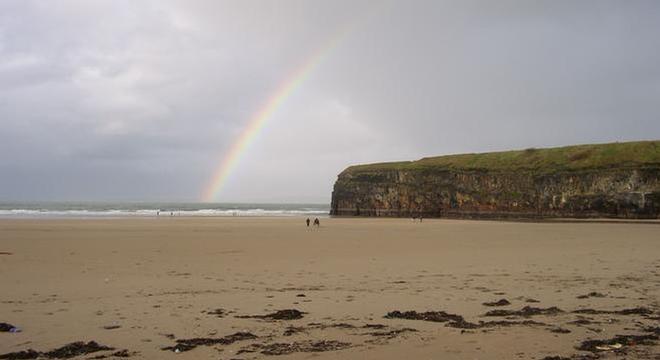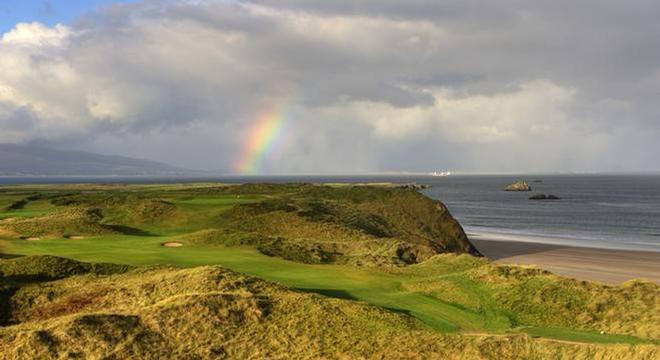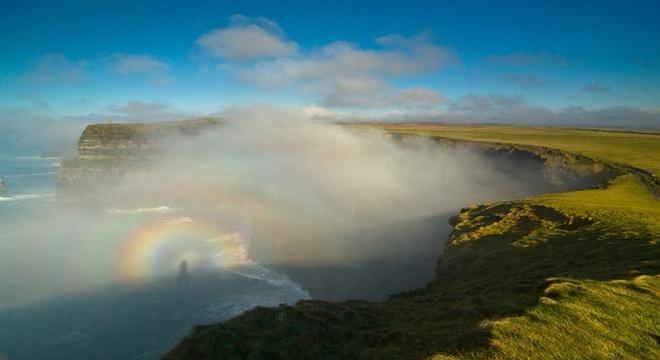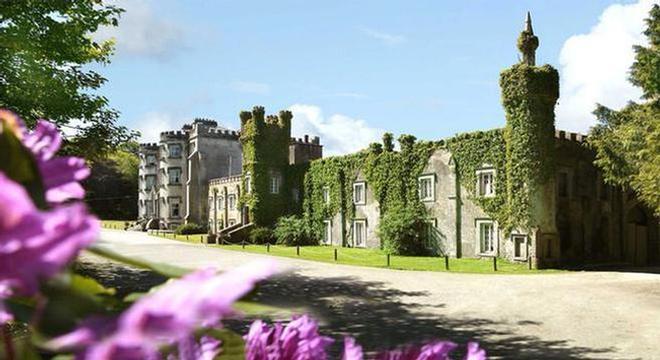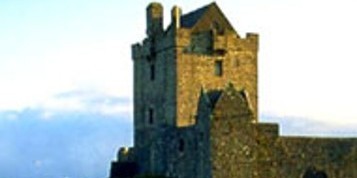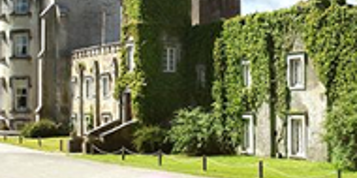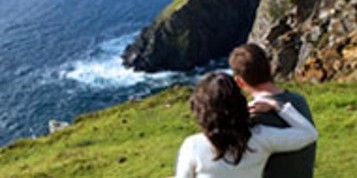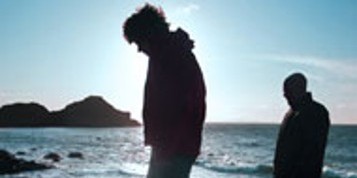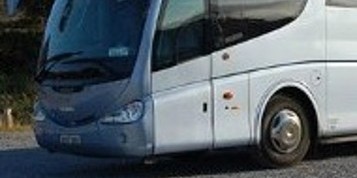Wild Atlantic Way
Wild Atlantic Way 10 Nights
The Wild Atlantic Way is Ireland’s iconic driving route. The entire route begins just before Malin Head in North Donegal which is Ireland’s most Northerly point and ends close to Ireland’s most Southerly point, Mizen Head in County Cork.
15% Off ALL rail and self-drive vacations! Book by April 30th!
Book ANY self-drive or rail vacation by April 30th and enjoy 15% off! Don't miss out - explore more for less!
*CIE tours and Knitting tours not included.
-V3.png)
This self-drive tour around the coast of Irelands spectacular Wild Atlantic Way is accessible through Shannon airport and is a 10-night tour based on exploring the highlights of this hauntingly beautiful coastal route.
The Wild Atlantic Way driving tour boasts the fact that it is the longest defined coastal route in the world, stretching for 2500km along Ireland’s western seaboard. During this tour guest will have the opportunity to experience the full extent of Irish traditions and the cultures that created them, all while tracking the rugged coastline of the Island and maybe even getting the chance to pick up a word or two of our own native language.
The west coast of Ireland is without a doubt the most culture rich region in the country. Here the Gaelic culture thrives with much of the population still speaking Irish as their primary language. While much of Ireland has to some degree abandoned our native tongue there is no sign that will be happening along the west coast anytime soon. If anything it is the people and their devotion to their culture that might distract you from the wonderful sights to be seen. The people here, although fiercely loyal to their own, will also welcome visitors with open arms and regale you with stories and the history of their homesteads. By day you will be kept busy trying to soak up as much of the local scenery as possible including the magnificent Cliffs of Moher, the Aran Islands, Killary Harbor and the stark Burren Landscape of County Clare as well as the Dingle Peninsula in Kerry. By night rest your weary bones by a roaring turf fire or by having a pint and chatting to the locals in any one of the numerous welcoming pubs to be found along the Wild Atlantic Way. You can also bet on there being plenty of traditional music and maybe a dance or two for you to enjoy during your stay.
As your tour nears its conclusion you will spend your final night in Galway city, the City Of The Tribes as it is sometimes called. Although this bustling metropolis is a world away from the small coastal villages which you will have paid visits to, it is almost certainly the perfect way to bring your vacation to a close. This city of culture is one that stands out among many as it is the only large city in which you will hear Irish spoken on the streets. If nothing else catches your ear in this vibrant city at least you will leave our little Island with the sense of culture we are so proud of.
Overnights for this tour:
- Kinsale for 2 nights
- Kenmare for 1 night
- Dingle for 2 nights
- West Clare for 1 night
- Connemara for 1 night
- Westport, Mayo for 2 nights
- Galway for 1 night
Included in your price:
- Free calls to your personal Ireland vacation specialist
- 10 nights accommodation on a B&B basis
- Road map of Ireland
- Discounted admission to attractions throughout Ireland
Car Rental:
Rental of a economy-size car. Included with your car is all compulsory insurances - Collision Damage Waiver insurance (CDW with an excess/deductible), theft protection insurance, location fee of €30, Road fund tax, sales tax at 13.5%, unlimited free mileage, third party liability insurance, 24 hour peace of mind breakdown cover.
Occupancy:
Prices are per person based on 2 persons in each room with full Irish breakfast and taxes included. A single supplement will apply to rooms and car rental in the case of single occupancy.
Currency:
Please note that we charge in Euros (€). Prices in other currencies are for indication only and subject to fluctuation.
Day 1: Travel to Kinsale via Limerick City, Blarney and Cork City with optional detours to the Tipperary towns of Cahir & Cashel and Cobh in Cork. Among the most interesting attractions in Limerick are King John’s Castle and The Hunt Museum. From there, the direct route to the small coastal town of Kinsale will allow you to ‘Kiss the Blarney Stone’ at Blarney Castle and visit the Cobh Heritage center near Cork. Cobh, situated on one of the world’s largest natural harbors, was the last port of call for the ill-fated Titanic in 1912 and was the closest port to the site of the sinking of the Lusitania in 1915. The Heritage center also recounts the story of those Irish who left Ireland during ‘The Famine’. An optional detour includes visits to ‘The Rock of Cashel’ and ‘Cahir Castle’, both in Tipperary and both are amongst Ireland’s premier historic attractions. Kinsale is a delightful harbor town that has retained its old-world charm and has a myriad of old Irish pubs and excellent restaurants as well history-laden attractions such as the Desmond Castle Museum and the star-shaped ‘Charles Fort’ from the 17th century.
Day 2: While in Kinsale
If you did not have a chance to visit the following of Kinsale's major attractions, make sure to include them today. Desmond Castle and the International Museum of Wine, which was built in about 1500, had many uses. In 1600 and 1601 it was used as an arsenal by Don Juan Aguilla during the Spanish occupation of the town which lasted for 100 days prior to the Battle of Kinsale in 1601. In the 17th century, the castle became popularly known as the "French prison" and was used for prisoners of war, most of whom were captured at sea. During the American war of Independence, the crews of many American vessels were held a prisoner in Kinsale in poor conditions. Other notable attractions include Charles Fort, the 17th Century star-shaped fort. St. Multose Church is well worth a visit and was built in 1190. The Courthouse and Regional Museum were used for ceremonial occasions in the 18th century. In 1915, the Courthouse was used for the inquest into the sinking of the Lusitania. The Regional Museum is now housed in the Courthouse. If you did not manage to visit Cobh or Blarney the previous day, then you will have the option of doing so today.
Day 3: Kinsale to Kenmare
Leaving Kinsale you head towards Bantry from where you can visit Mizen Head, the southernmost point in Ireland, as well as Bantry House and Gardens and the French Armada Center. From Bantry, you will be heading north to Killarney via the Healy Pass. Have your cameras at the ready for some breathtaking scenery across the Caha Mountains that divide Cork from Kerry. After the mountain pass, you come to the town of Kenmare. The town was founded in 1670 by Sir William Petty and has a history of lace making, demonstrations of which can be seen at the town’s Heritage Center.
Days 4 & 5: Kenmare to Dingle
Leaving Kenmare, you head towards the village of Annascaul, the birthplace of Jerome Connor, the famous sculptor, and Tom Crean, a local hero who accompanied Scott and Shackleton on three Antarctic expeditions, including Scott’s doomed attempt to reach the South Pole. On his return to Annascaul Crean opened the "South Pole Inn", which is still in business today. Minard Castle is also well worth a visit. The castle is said to have been built by the Knight of Kerry and is the largest fortress on the peninsula. Continue on past Dingle and visit Dunbeag Promontory Fort. What makes it one of the most dramatic archaeological sites on the peninsula is that results show that it was begun in the late Bronze Age, 800 BC. Continue on to Slea Head and here you will see Dun An Oir (Fort of Gold. Here in 1580, after three days of siege, over 600 Irish and Spanish soldiers surrendered to Lord Grey only to be massacred by his troops. Nearby is the Gallarus Oratory, one of the best-preserved early Christian church buildings in Ireland. Back to Dingle for the evening. Here you will find among other great pubs and restaurants, Dick Macks, possibly Dingle’s most famous pub, which is half a leather shop and half a pub, so you can buy a pint and a purse at the same time! Foxy John’s is a hardware store and pub combined – an unusual arrangement to say the least.
Day 6: Dingle to Doolin
After an early breakfast depart Dingle in the direction of Brandon to drive over the renowned Conor Pass, Ireland’s highest mountain pass. At the summit Brandon and Tralee Bays can be seen to the north, with the sandy Castlegregory peninsula separating them and to the south lies Dingle Bay. Continue to Tralee and Tarbert where you will take a ferry crossing on the Shannon Estuary to County Clare. Continue north to the Cliffs of Moher. The majestic Cliffs of Moher are without doubt one of Ireland’s most spectacular sights and overlook the Atlantic Ocean on the coast of West Clare. You then arrive at the village of Doolin. Doolin is world-famous for its wealth of Irish folk music and in recent years has been attracting crowds to spontaneous sessions in any one of its excellent pubs. Just north of the Cliffs you then have the lunar-like Burren region and the ancient Poulnabrone Dolmen Tombs as well as the Aillwee Caves. With an earlier start to the day, there is a longer inland route that will include visits to Adare Village, one of the prettiest villages in Ireland, King John’s Castle in Limerick City and Bunratty Castle and Folk Park just 10 minutes north of Limerick.
Day 7: Doolin to Connemara
Today we travel to the university city of Galway and on to the Connemara region west of Galway via the lunar-like Burren Region and the ancient Poulnabrone Dolmen Tombs. Also on the route, you will have a chance to visit Dunguaire Castle which was built in 1520 by the O'Hynes clan on the picturesque shores of Galway Bay. You will also have the chance to stop in Galway, the ‘City of the Tribes’ is also known as Ireland’s Cultural and festival capital. With its street entertainers and traditional pubs with great music, Galway and in particular, the Quays area of the city center will captivate you, particularly in the evening time. Other sites in Galway include Ireland’s largest medieval parish church, the Collegiate Church of St Nicholas of Myra dating back to 1320. Christopher Columbus reputedly worshipped in this church in 1477. Also nearby are Galway Cathedral, the Spanish Arch and Eyre Square. Continue west of Galway to the hauntingly beautiful Connemara Region. Situated on the most western seaboard of Europe, this unspoiled region boasts breathtaking scenery. The characteristic features of Connemara include its rugged, unpolluted coastline, dramatic mountains, numerous lakes and rivers and woodlands, and the renowned Connemara National Park. Visit Kylemore Abbey and the Lough Inagh Valley as well as the spectacular Sky Road near the town of Clifden. You can also visit the fishing village of Roundstone and see how a ‘Bodhran’ (traditional Irish Drum) is made
Day 8: Connemara to Westport
Touring north from Connemara, you will also be able to walk along the fjord at Killary harbor or indeed take the catamaran cruise through Ireland's only fjord. From there travel just south of Westport to see Croagh Patrick, otherwise known as Ireland's 'Holy Mountain' upon which St. Patrick (according to Irish folklore) spent 40 days fasting. The area around Croagh Patrick is rich in archaeological remains which provide an interesting insight into life in times past. Findings date back to 200 B.C. Just north of the town of Westport in the county of Mayo is Ireland’s least populated region where you can walk the open countryside for miles with no company other than the local sheep. The amazing geology, archaeology, botany, and wildlife of this region of North Mayo is interpreted for us at The Céide Fields Visitors' Center with the aid of an audio-visual presentation and exhibitions. You may also wish to visit Westport House - Designed by the famous architects Richard Cassels and James Wyatt in the 18th century, Westport House is located west of the Shannon and is one of the Irelands’ most historic homes open to the public.
Day 9: Day trip from Westport
From Westport to the Ceide Fields near Ballycastle in the north-western tip of County Mayo is a predominantly scenic drive of approximately 74 miles that will take in excess of 2 hours. An early start to the day will allow you to make a number of stops along that route. Just before Ballycastle, you will arrive at the Ceide Fields on the R314. The surrounding area is rich in archaeological treasures, dating from the Neolithic period. The amazing geology, archaeology, botany, and wildlife of this region of North Mayo is interpreted for us at The Céide Fields Visitors' Center with the aid of an audio-visual presentation and exhibitions. Once finished here. return to Westport and enjoy some of the local nightlife!
Day 10: Galway City
Returning to Galway from Westport, you reach Galway City, the ‘City of the Tribes’ also known as Ireland’s Cultural and festival capital. Galway and in particular, the Quays area of the city center will captivate you, particularly in the evening time. Other sites in Galway include Ireland’s largest medieval parish church, the Collegiate Church of St Nicholas of Myra dating back to 1320. Christopher Columbus reputedly worshipped in this church in 1477. Also nearby are Galway Cathedral, the Spanish Arch and Eyre Square. If using Galway as a base will enable you to spend time in the Connemara Region as well as the Aran Islands.
Day 11: End of Tour
Check out of your hotel and bid farewell (for now) to Ireland!
15% Off ALL rail and self-drive vacations! Book by April 30th!
Book ANY self-drive or rail vacation by April 30th and enjoy 15% off! Don't miss out - explore more for less!
*CIE tours and Knitting tours not included.
-V3.png)
Accommodation & Car
| B&Bs | 3*Hotels | 4*Hotels | Combination | |
|---|---|---|---|---|
| Jan-Mar & Nov-Dec | €1,190 | €1,390 | €1,880 | €1,460 |
| April & October | €1,190 | €1,580 | €1,990 | €1,630 |
| May-June | €1,360 | €1,990 | €2,540 | €1,990 |
| July & September | €1,530 | €2,180 | €2,710 | €2,190 |
| August | €1,530 | €2,180 | €2,710 | €2,190 |
- Please note prices are per person based on 2 persons in each room with full Irish breakfast and taxes included
- The Combination package includes 4 Nights in 3*** Hotels, 3 nights in Luxury Manor House Hotels & 3 Nights in our hand-picked B&B's
- Children Sharing with 2 adults (aged 2-11) pay 40% of the Adult option
- Children under the age of 2 are free when sharing with 2 Adults
- Your Accommodation & Car Rental Package rate includes an Economy class car eg., Opel Corsa or Fiat Punto
- Included with your car is all compulsory insurances - Collision Damage Waiver insurance (CDW with an excess/deductible), theft protection insurance, location fee of €30, Road fund tax, sales tax at 13.5%, unlimited free mileage, third party liability insurance, 24 hour peace of mind break down cover.
